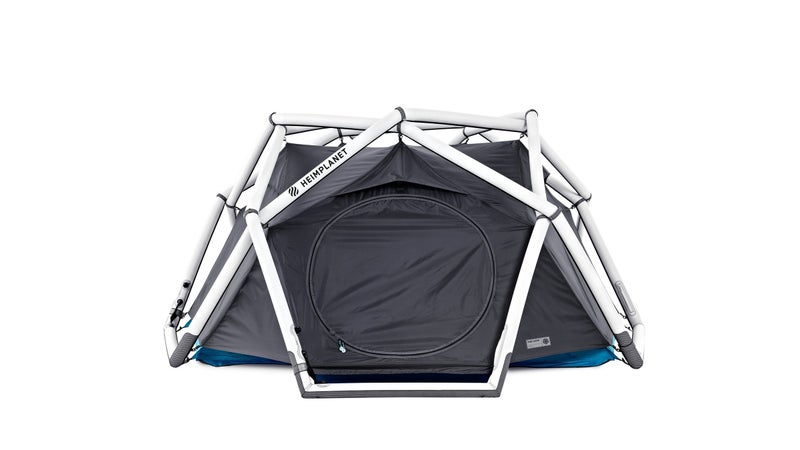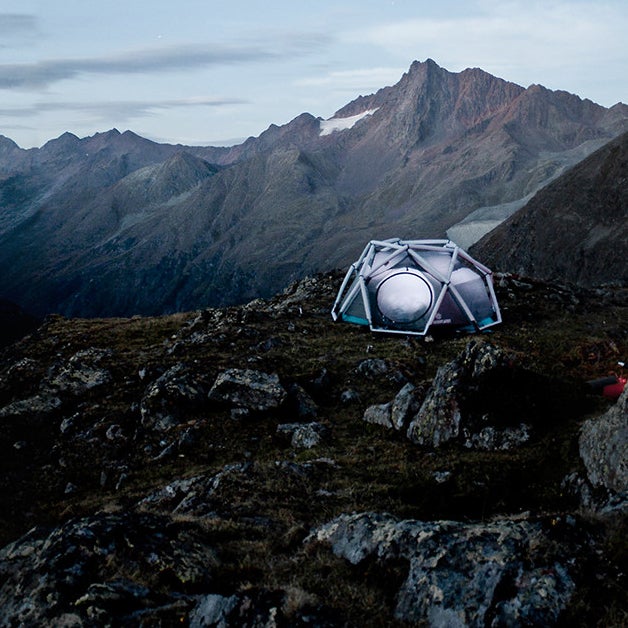The star of Netflix’s latest sci-fi series isn’t a forgetful robot or even a pesky kid. Rather, it’s an odd-looking tent from Germany that steals most of the first episode’s screen time.��
The show, Lost in Space,��gets a lot of things wrong. Fire burns up, not out. Ice freezes from top to bottom, not the other way around. And it doesn’t actually rain liquid water in below-freezing conditions. But one thing it gets right is the tent that the Robinson family relies on to survive their first night on the alien planet.��
That tent is the , and you can actually .
HeimPlanet’s most distinguishing feature is its use of inflatable geodesic poles. That unique design makes the tent more stable in��high winds, faster��to set up, and easier to repair.��The poles themselves are made from a strong TPU inner tube (yes, just like in bike tires)��that inflate inside a rugged polyester sleeve. To set the tent up, you just spread it out, hook up the included pump, and start blowing air: in just a few seconds, the tent will stand��up on its own as you inflate it. After staking it down, no other work is required.��

Like a tree or skyscraper, the inflatable poles are designed to flex with the wind, making the structure better able to stand up to fierce weather (HeimPlanet’s is designed for wind speeds up to 112 miles per hour), or even��damage from a falling rock or, you know,��space-ship part. Most of the time, the poles will just bounce back after an impact like that—the polyester sheath does an excellent job protecting the inner tubes from abrasion and punctures. But should you manage to put a hole in one, repairing the tube is just as easy as patching a bike tube. HeimPlanet employs a novel tube connection system that allows you to blow up the poles all at once, then separate them into individual chambers, ensuring stability should one of those chambers be damaged. Traditional rigid poles, on the other hand, whether they be aluminum, fiberglass, or carbon fiber, will snap and shatter in big impacts, and can prove impossible to repair as a result.��
The last advantage of this configuration is packability. While the two- to three-person tent weighs a hefty 10.6 pounds, it’s un-inflated poles can be rolled, jammed, or packed into compartments of virtually any shape (unlike rigid poles, which create a minimum packed length), and in that state are virtually impervious to damage. With an inflatable pole tent all bundled up, you can subject them to falls, impacts, or even spaceship crashes without fear of damage.��
The bottom line? If we were planning to colonize an alien planet, we would likely bring along a Heimplanet as our emergency shelter.��


